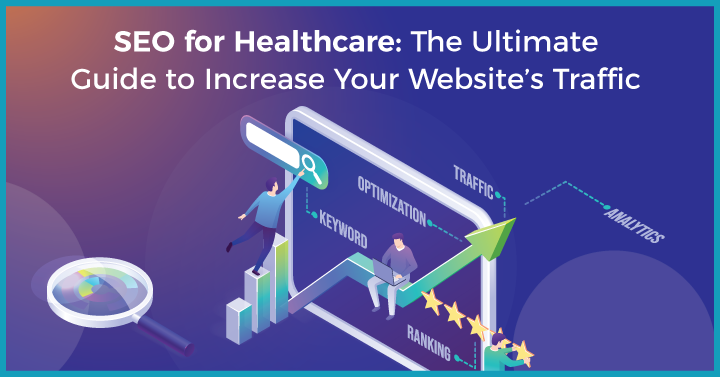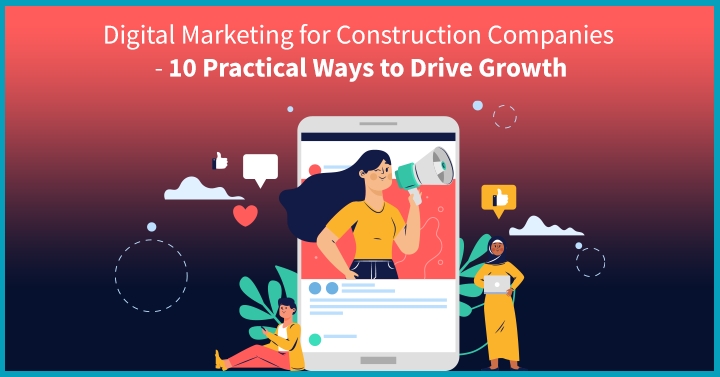Are you struggling to drive organic traffic to your website?
Do you fail to attract qualified leads to your landing pages?
Are you searching for effective ways to improve your website’s search engine rankings?
If you answered “yes” to any of these questions, then SEO is the solution you need for your business.
In today’s digital landscape, search engine optimisation (SEO) plays a crucial role in boosting organic traffic and increasing visibility for your website. However, SEO is a dynamic and complex field that demands a thorough understanding of the latest trends and tried-and-true tips.
To help you attain desired results through SEO, we have compiled 15 SEO best practices that can skyrocket your website’s organic traffic and enhance its visibility in search engine results.
Let’s get started.
1. SEO: Definition & Types
Search Engine Optimisation (SEO) is a digital marketing technique that aids in improving website visibility and ranking in search engine results pages (SERPs). The primary goal of SEO is to increase organic (non-paid) traffic by adjusting various aspects of a website, such as its content, structure, and technical elements, to align with search engine algorithms and user intent.
Now, let’s read about the different types.
1.1 On-Page SEO:
On-page SEO involves optimising various on-page elements such as content, title tags, meta descriptions, headings, URL structure, internal linking, and keyword usage. It aims to make the website’s content more relevant, informative, and accessible to search engines and users, thus increasing its chances of ranking higher in SERPs.
1.2 Off-Page SEO:
Off-page SEO mainly focuses on building backlinks from other reputable websites, thereby enhancing the website’s credibility. Off-page SEO techniques include link building, social media marketing, influencer outreach, guest blogging, and online reputation management.
1.3 Technical SEO:
Technical SEO involves improving the technical aspects of a website, such as its crawling, indexing, and overall performance in search engines. It focuses on the website’s structure, speed, mobile-friendliness, accessibility, and other technical elements that impact search engine visibility.
By combining on-page, off-page, and technical SEO efforts, businesses can maximise their chances of attracting organic traffic and achieving their digital marketing goals.
Now that we know the basics let’s understand the benefits of SEO.
2. Why is it Important to Incorporate SEO in Your Digital Strategy?
Incorporating search engine optimisation (SEO) into your digital strategy is crucial for several reasons. Here are some of them:
- SEO helps your website rank higher in SERPs, making it easy for target customers to find your site while searching for relevant keywords.
- By optimising your website for search engines, you can attract a constant stream of organic traffic, reducing your dependence on paid media.
- SEO can improve your brand reputation, as high-ranking websites are often perceived as more trustworthy and credible.
- SEO involves improving your website’s speed, usability and mobile friendliness, contributing to a better user experience.
- Unlike paid advertising, which stops when your budget runs out, targeted SEO efforts can provide sustainable results over time.
Now that we know the benefits, let’s understand some of the best SEO practices.
3. Best SEO Practices to Improve Organic Traffic
“According to a survey, SEO drives 1,000%+ more traffic than organic social media.”
Hence, businesses must know about the best practices of Search Engine Optimisation to drive relevant organic traffic and enhance business profitability.
The following are some of the SEO best practices –
3.1 On-Page SEO Tips:
1. Conduct Competitor Analysis & Keyword Research
Competitor analysis and thorough keyword research are essential components of on-page SEO. Studying competitors’ websites, content, backlinks, and social media presence uncovers opportunities and provides a competitive edge. This includes identifying their targeted keywords, content types, and linked websites.
Furthermore, integrating these relevant keywords into your website content, meta tags, headers, and URLs improves search engine relevance. Such strategic incorporation aligns your content and SEO efforts with the preferences and needs of your target audience, resulting in increased organic traffic and enhanced online visibility.
2. Add Relevant Internal Links Within Your Content
Internal linking is the practice of linking one page on your website to another page on the same website. Adding relevant internal links can help search engines’ crawlers understand the relationship between different pages. Further, this web of interconnected pages offers users seamless navigation and content discovery.
For example, suppose you have a blog post discussing the benefits of a particular skincare ingredient. In that case, you can include internal links to other blog posts or product pages that provide more information about skin care routines or products containing that ingredient. This makes visitors spend more time on your website and engage with your services.
3. Optimise Pages with Header Tags, Titles & Meta Descriptions
Optimising header tags, titles, and meta descriptions is vital for effective on-page SEO. These elements provide information to search engines’ bots. Header tags, such as H1, H2, and H3, structure the content, aiding search engines in understanding the article’s layout.
Additionally, titles and meta descriptions that appear in search engine results serve as the first impression for users, attracting clicks and driving traffic. Therefore, crafting a well-optimised title that summarises the content and includes relevant keywords is crucial. Similarly, a compelling meta description within 155 characters can entice users to click.
4. Use proper ALT Text to Boost Image Search Visibility
ALT text, an HTML attribute for images, helps search engines understand the image’s content and improve its visibility in SERPs. It is important to provide descriptive and accurate ALT text so that search engines can understand the purpose of the image. This increases the likelihood of the image appearing at the top of SERPs.
In addition to that, to improve image search visibility, it’s crucial to add relevant keywords while writing an ALT text. For example, for an image of a modern coffee table, instead of using generic ALT text like “IMG_12345,” you can use “Modern coffee table with sleek design”. This description helps search engines understand the image and contextually connect it to relevant search queries.
5. Create Concise URLs to Indicate the Page Content
“According to a study by Backlinko, short URLs tend to rank better in search engine results.”
It is because a concise URL helps search engines understand the page’s topic clearly and is visually appealing. For example, consider a blog post about “Top 10 Tips for Healthy Eating.” A concise URL for this page could be “www.example.com/healthy-eating-tips” rather than a lengthy URL with random characters like “www.example.com/?p=12345.”
Clear and concise URL improve user experience as it makes the page’s content more evident. Moreover, they are easier to share on social media platforms and other digital marketing initiatives. Additionally, when users see a concise URL that matches their interests, they will likely click on it and engage with the page.
3.2. Off-Page SEO Tips:
1. Build High-Quality Backlinks to Increase the Website’s Credibility
Backlinks, incoming links from other websites, act as votes of confidence and indicate that your content is valuable and trustworthy. Thus, it is necessary to have high-quality backlinks from reputable and relevant websites. It will help you enhance your website’s credibility and rank in search engine results.
Additionally, backlinks drive referral traffic, as users clicking on these links are directed to your website. For instance, if you’ve published a technology blog, having a leading tech publication referring to your article will bolster your site’s authority. You can acquire backlinks through guest blogging, creating shareable content, etc.
2. Promote your Content Through Various Social Media Channels
With the ever-growing number of internet users worldwide, social media platforms provide an excellent opportunity for effective content marketing. It allows you to reach a vast audience and target potential customers based on their interests, demographics, and behaviours.
By sharing your content on platforms like Facebook, Instagram, LinkedIn, and YouTube, you can tap into each platform’s user base and expand your reach. For example, if you have a fashion blog, sharing your latest blog post on Instagram with visually appealing images can attract fashion enthusiasts to visit your website.
3. Submit your Website to Reputable Online Directories
Listing your website on reputable online directories can significantly boost its digital presence and search engine rankings. These directories serve as valuable resources for industry-specific information and businesses. By listing your website on these platforms, you increase the chances of reaching your target audience and potential customers.
Additionally, it’s essential to focus on directories with strong domain authority and relevance to maximise the impact of your submissions. For instance, a local business offering pet grooming services could benefit from directories like “PetGroomingFinder” or “LocalPetServicesDirectory,” attracting pet owners in their area.
4. Collaborate with Influencers & Industry Experts to Boost Brand Visibility
By leveraging influencers’ established following and expertise, your brand gains access to a broader and more engaged audience. For instance, a fitness apparel company partnering with a well-known fitness influencer can create compelling content, showcasing the influencer wearing their products during workouts.
This promotes the brand and aligns it with fitness and health, attracting potential customers who trust the influencer’s recommendations. Such partnerships help improve the brand’s online presence, build trust, and ultimately drive more conversions.
5. Engage with online communities & forums related to your industry
Engaging with industry-relevant online communities and forums is an invaluable strategy for staying updated on the latest trends and building meaningful connections with like-minded professionals. For this, you can participate in discussions, answer questions, and provide valuable insights and advice related to your niche.
As an active and respected community member, you can establish the brand’s identity and drive targeted traffic to your website. This also helps firms build brand credibility and prove themselves as industry experts. For instance, a tech entrepreneur can join a programming community, contributing helpful solutions to coding challenges and gaining visibility for his startup.
3.3 Technical SEO Tips:
1. Improve your website loading speed to reduce bounce rate
“According to Google, if a page takes longer than three seconds to load, 53% of users will abandon it.”
Thus, the website loading speed is a critical factor influencing the user experience. A slow-loading website can lead to a high bounce rate, where visitors leave your site quickly without engaging. Therefore, to optimise your website’s loading speed, businesses can compress images and minify CSS and JavaScript files.
Further, leveraging browser caching and content delivery network (CDN) can reduce latency and enhance loading time. For example, when an e-commerce website optimised its images and minimised HTTP requests, its page load time decreased from 5 to 2 seconds. As a result, the bounce rate decreased by 25%, and the conversion rate increased by 15%.
2. Optimise Website Design & Navigation to Enhance User Experience
According to Stanford’s Web Credibility Research, “judgements on a company’s credibility are 75% based on the company’s website design.”
The above stat implies that a well-designed website with intuitive navigation is crucial for quick and easy information access, promoting desired actions. To achieve this, ensure a clean and professional design, with user-friendly navigation menus and proper calls-to-action. Further, include elements such as clear typography, balanced layouts, and visually appealing graphics such as – images and videos that enhance readability.
Moreover, businesses can optimise website design for different devices and screen sizes to ensure a consistent and user-friendly experience across various platforms. For example, an e-commerce website with easy-to-navigate product categories and prominent search functionality fosters access to customers, increasing the likelihood of conversions.
3. Generate and Submit an XML Sitemap for Better Crawlability
When search engines crawl a website, they rely on various signals and links to navigate the pages. However, sometimes they may miss certain pages due to complex website structure or poor internal linking. This is where an XML sitemap comes in. It is a file that lists all the pages on your website, helping search engines understand the structure and organisation of your content.
According to Google, “submitting an XML sitemap can assist search engines in crawling and indexing your website more efficiently.”
Therefore, generating an XML sitemap and submitting it to various search engines can improve the crawlability of your website and ensure that all your important pages are indexed. This enhances the visibility of your website in search results, ultimately leading to better traffic and customer engagement.
4. Secure your Website with an SSL Certificate to Protect User’s Data
In the age of heightened online threats, website security is crucial for businesses. Hence, it is important to install an SSL certificate to prevent data breaches and theft. An SSL (Secure Sockets Layer) certificate encrypts login credentials, personal details, and payment data from unauthorised access.
For instance, in an e-commerce website, payment information such as credit card details is vulnerable. However, implementing the SSL certificate safeguards all communication between the customer and the website. This helps build trust among your users and improves rankings as major search engines prioritise secured websites to appear in the SERPs.
5. Regularly Check and Fix Broken Links to Avoid Errors
Broken links or dead links are links that point to non-existent or inaccessible web pages. They can occur for various reasons, such as changing URLs, deleting pages, linking to external websites that no longer exist, etc. This can degrade the user experience and disrupt search engine crawling.
Therefore, it is vital to regularly check your website for broken links and fix them promptly. Broken links can be updated or redirected to relevant and working pages to maintain a smooth user experience and ensure search engine bots can navigate your website effectively.
The above SEO tips provide a comprehensive approach to optimising your website for search engines and providing better results.
Now, let’s understand how a digital marketing agency will help you achieve the same.
4. How can a Digital Marketing Agency Help?
A digital marketing agency can be your valuable partner in implementing various SEO strategies and driving business growth. They bring expertise and resources to the table, helping you in key areas such as thorough competitor and keyword research for the target audience and outlining relevant SEO tactics.
Growth Ganik is a full-stack marketing agency with over 15 years of experience, specialising in SEO, digital strategy and growth marketing. By implementing our SEO strategy and best practices, your website can lead SERP rankings, drive relevant traffic, and generate qualified leads for both Marketing (MQL) and sales (SQL).
Why wait? Book a free consultation with our experts for a tailor-made SEO strategy!
















